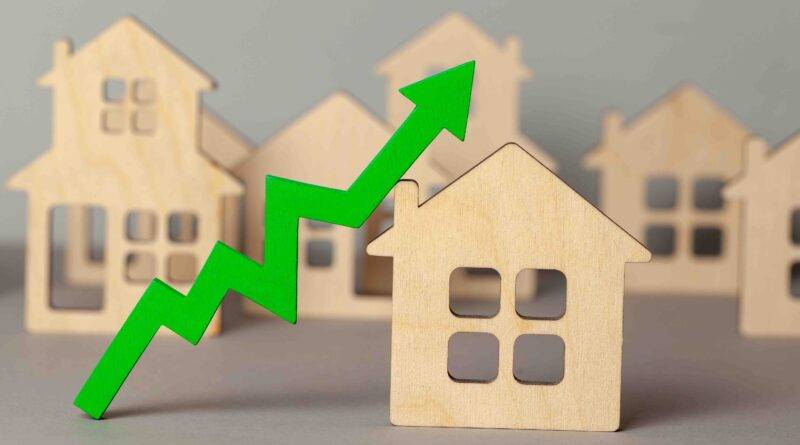“Higher for Longer” Still Leaves Room for Affordability to Improve in 2024
Even modest improvements in housing affordability will be welcome news for buyers currently sitting on the sidelines, says First American Chief Economist Mark Fleming
SANTA ANA, Calif., – First American Data & Analytics, a leading national provider of property-centric information, risk management and valuation solutions and a division of First American Financial Corporation (NYSE: FAF), today released the January 2024 First American Data & Analytics’ Real House Price Index (RHPI). The RHPI measures the price changes of single-family properties throughout the U.S. adjusted for the impact of income and interest rate changes on consumer house-buying power over time at national, state and metropolitan area levels. Because the RHPI adjusts for house-buying power, it also serves as a measure of housing affordability.
Chief Economist Analysis: January Uptick in Affordability Not Enough to Close Year-Over-Year Decrease
“In January 2024, mortgage rates declined and affordability improved by nearly 2 percent compared with December, according to the RHPI. However, on an annualized basis, affordability decreased by approximately 7 percent,” said Mark Fleming, chief economist at First American. “Two factors drove the sharp annualized drop in affordability – a 7.1 percent annual increase in nominal house prices, according to our First American Data & Analytics House Price Index, and a 0.4 percentage point increase in the 30-year, fixed mortgage rate compared with one year ago.
“For home buyers, holding prices constant, the only way to mitigate the loss of affordability caused by higher mortgage rates is with an equivalent, if not greater, increase in household income,” said Fleming. Even though household income increased 3.9 percent since January 2023 and boosted consumer house-buying power, it was not enough to offset the affordability loss from higher mortgage rates and rising nominal prices.”
The Housing Implications of “Higher for Longer”
“At the end of 2023, the market was expecting that the Fed would cut rates six-to-seven times in 2024. However, with the economy and labor market proving resilient, and inflation remaining stickier than anticipated, the Fed seeks further assurance that inflation is headed sustainably towards their 2 percent target,” said Fleming. “As a result, expectations for rate cuts have pivoted, and the majority expect three or fewer rate cuts this year.
“While the 30-year, fixed mortgage rate isn’t directly tied to Fed actions, it is loosely benchmarked to the 10-year Treasury yield. Many factors can drive the 10-year Treasury yield up and down, but one major force is inflation expectations,” said Fleming. “The higher the expectations for future rates of inflation, the higher the yields on the 10-year, and the higher the mortgage rate. With inflation proving stickier than expected and the market believing that rates will stay ‘higher for longer,’ mortgage rate expectations have drifted higher for this year. What does this mean for affordability?”
Expect Affordability to Improve Modestly by Year End
“The RHPI measures affordability by adjusting the First American Data & Analytics House Price Index for purchasing power – how income levels and interest rates influence the amount one can borrow,” said Fleming. “These factors are expected to change in the following ways in 2024.”
- Income Growth Expected to Moderate: “The labor market remained strong in January, as rising wages resulted in higher household income. Annual hourly wage growth increased by 4.4 percent compared with a year earlier, job growth remained steady, and the unemployment rate stayed low. The rise in wage growth contributed to a 3.9 percent year-over-year increase in median household income,” said Fleming. “The labor market faces a persistent labor shortage, putting upward pressure on household income, but that shortage has narrowed from the peak of 2022, and will likely continue to narrow in 2024, which should drag the pace of household income growth towards historical norms.”
- Mortgage Rates Projected to Retreat from 2023 Peaks: “Mortgage rates reached a recent peak of 7.6 percent in October 2023, but have since drifted below 7 percent,” said Fleming. “The average among mortgage industry forecasts projects that mortgage rates will end 2024 at approximately 6.25 percent, as inflation is expected to recede, and the Fed is expected to begin cutting rates.”
- Nominal House Prices Likely to Rise: “The housing market remains undersupplied relative to demand, which puts upward pressure on prices,” said Fleming. “As a result, annual nominal house price appreciation will likely continue to remain positive nationally, but return closer to the historical average of 3-to-4 percent, as the housing market adjusts to the reality of higher mortgage rates, and affordability constraints remain. The average of different industry forecasts suggests a 3.7 percent annual increase in nominal house price growth by the end of 2024.”
Still Reason for Optimism
“If mortgage rates fall to 6.25 percent by the end of 2024, household income grows at the pre-pandemic historical average of 2.9 percent compared with the end of 2023 and nominal house prices increase by 3.7 percent annually, affordability will improve by a little over 3 percent at the end of the year compared with January. Even modest improvements in housing affordability will be welcome news for buyers currently sitting on the sidelines,” said Fleming. “However, even at this level, affordability will remain nearly 38 percent worse than in February 2022, just before the Fed started increasing rates. The industry predicts that 2025 will bring even lower mortgage rates – the sooner the better for prospective home buyers.”
January 2024 Real House Price Index Highlights
- Real house prices decreased 1.8 percent between December 2023 and January 2024.
- Real house prices increased 7.2 percent between January 2023 and January 2024.
- Consumer house-buying power, how much one can buy based on changes in income and mortgage rates, increased 2.1 percent between December 2023 and January 2024, and decreased 0.1 percent year over year.
- Median household income has increased 3.9 percent since January 2023 and 89.1 percent since January 2000.
- Real house prices are 40.7 percent more expensive than in January 2000.
- Unadjusted house prices are now 58.2 percent above the housing boom peak in 2006, while real, house-buying power-adjusted house prices are 1.6 percent below their 2006 housing boom peak.
January 2024 Real House Price State Highlights
- The five states with the greatest year-over-year increase in the RHPI are: South Dakota (+17.9 percent), New Mexico (+17.4 percent), New Jersey (+16.9 percent), Maine (+14.3), and Illinois (+14.0 percent).
- There were no states with a year-over-year decrease in the RHPI.
January 2024 Real House Price Local Market Highlights
- Among the Core Based Statistical Areas (CBSAs) tracked by First American Data & Analytics, the five markets with the greatest year-over-year increase in the RHPI are: Cincinnati (+13.1 percent), Hartford, Conn. (+11.7 percent), San Diego (+10.3 percent), Chicago (+10.2 percent), and Louisville, Ky. (+10.1 percent).
- There were no markets with a year-over-year decrease in the RHPI.
Next Release
The next release of the First American Data & Analytics’ Real House Price Index will take place the week of April 8, 2024.
Sources
Methodology
The methodology statement for the First American Data & Analytics’ Real House Price Index is available at http://www.firstam.com/economics/real-house-price-index.
Disclaimer
Opinions, estimates, forecasts and other views contained in this page are those of First American’s Chief Economist, do not necessarily represent the views of First American or its management, should not be construed as indicating First American’s business prospects or expected results, and are subject to change without notice. Although the First American Economics team attempts to provide reliable, useful information, it does not guarantee that the information is accurate, current or suitable for any particular purpose. © 2024 by First American. Information from this page may be used with proper attribution.
About First American Data & Analytics
First American Data & Analytics, a division of First American Financial Corporation, is a national provider of property-centric information, risk management and valuation solutions. First American maintains and curates the industry’s largest property and ownership dataset that includes more than 8 billion document images. Its major platforms and products include: DataTree®, FraudGuard®, RegsData®, First American TaxSource™ and ACI®. Find out more about how First American Data & Analytics powers the real estate, mortgage and title settlement services industries with advanced decisioning solutions at www.FirstAmDNA.com.
About First American
First American Financial Corporation (NYSE: FAF) is a premier provider of title, settlement and risk solutions for real estate transactions. With its combination of financial strength and stability built over more than 130 years, innovative proprietary technologies, and unmatched data assets, the company is leading the digital transformation of its industry. First American also provides data products to the title industry and other third parties; valuation products and services; mortgage subservicing; home warranty products; banking, trust and wealth management services; and other related products and services. With total revenue of $6.0 billion in 2023, the company offers its products and services directly and through its agents throughout the United States and abroad. In 2023, First American was named one of the 100 Best Companies to Work For by Great Place to Work® and Fortune Magazine for the eighth consecutive year and was named one of the 100 Best Workplaces for Innovators by Fast Company. More information about the company can be found at www.firstam.com.






